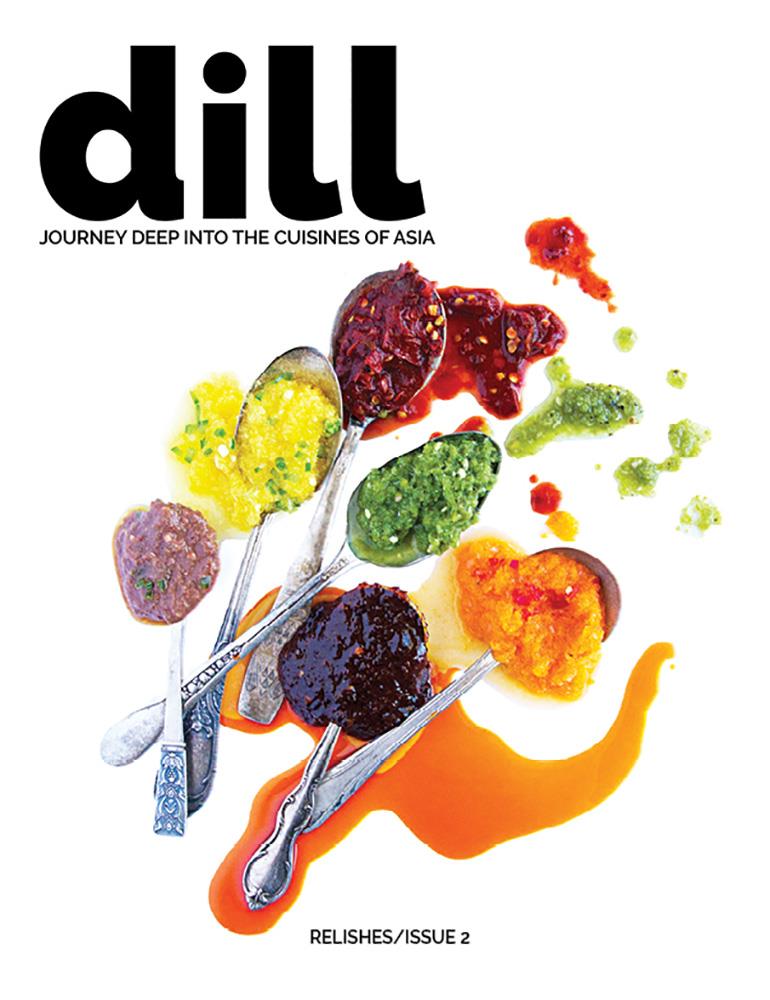College of LAS student launches food magazine

An undergraduate in the College of LAS has gotten a taste of entrepreneurship by going back to her roots. Shayne Chammavanijakul, a junior in linguistics, is the founder of Dill magazine, which, on the verge of releasing its third issue, has received wide recognition for connecting people to one of their most essential subjects: food.
Chammavanijakul, 20, was raised in a Thai family that took deep pride and interest in making, serving, and eating food. An avid reader of food literature while growing up, she found herself disappointed with the sensationalized, cliché, and simplified way that magazines and cookbooks addressed Asian cuisine. So, in summer 2017, she took this cultural issue into her own hands and began producing out a magazine that treats food the way she knows it to be: precise, complex, and meaningful from start to finish.
“I figured there would be a niche for a publication exploring Asian food in a detailed and nerdy way,” Chammavanijakul said. “What makes me excited is that there are people just as stoked about giving a voice to and spotlighting home cooks.”
After two issues, Dill—named for an herb found in various Indian, Thai, Vietnamese, and other Asian dishes—has accomplished what Chammavanijakul set out to do. After brushing up on Adobe InDesign (her only prior experience with the layout program was working on her high school newspaper), and with financial and editorial support from friends and family, she printed 10,000 copies of the first issue of Dill, released in summer 2017, which focused on noodle dishes from Filipino pansit and Indonesian soto mi to Chinese shaved noodles and even instant ramen.
The second issue, more polished than the first and released this past March, focused on relishes, including spicy Filipino beef dish, a Thai boat relish hardly ever served in the U.S., a Cambodian coconut and fermented fish dipping sauce, and a Thai roasted chile-water bug relish, eaten primarily for its floral scent.
The magazine has hit the spot. The magazine has been profiled by The New York Times, the Chicago Reader, and Chicago Magazine. The Dill team has also been making recent efforts to get the magazine into indie bookstores worldwide, and currently Chammavanijakul and her team are cooking up the third issue of Dill, to be released later this summer.
“We want to go past the usual lemongrass or ginger people may normally associate with Asian food to demonstrate that we cover things that have been overlooked,” Chammavanijakul said.

Dill is also achieving something other than highlighting overlooked cuisine: It’s bucking the trend of all printed content being posted online. The magazine has a website where readers can preview content and order a copy, but Chammavanijakul is a believer in print and paper. A reader must actually get their hands on a hard copy of the magazine to peruse most of its content.
So far, the decision hasn’t been a bad business move. As established food magazines have been shrinking and cutting staff, Chammavanijakul is part of a growing trend that industry-watchers say is bringing renewed growth to the art of printed publications. Dill was featured by The New York Times in a story that profiled “an unexpected groundswell across the country; a wave of small, sophisticated print magazines, produced on a shoestring by young editors with strong points of view and a passion for their subjects.”
“In the early processes of building the magazine up, I did have a lot of people tell me, ‘Print is dead. Why not publish content online?’” Chammavanijakul said. “But I've always loved print—the feeling of turning pages, the smell of books. And with print content you know that the writers are vetted and carefully selected. Since you have limited real estate in a 130-page magazine, you really want to know the kind of stories and photographs are going into it. I think that even makes it more special.”
Dill is an independently published magazine, and Chammavanijakul’s team consists of a lot of family and friends whom she works hard to compensate and coordinate with. She spent last summer rolling burritos and mixing salsas at Chipotle to pay contributors. A good family friend serves as the editorial coordinator, and another friend represents the magazine at promotional events.
“I'm extremely grateful to have had family and friends of family provide both financial and editorial support,” Chammavanijakul said. “That's what our team comprises; we've been working hard and it's a learning experience for everybody… It's a team effort, and not at all a one-man show.”








